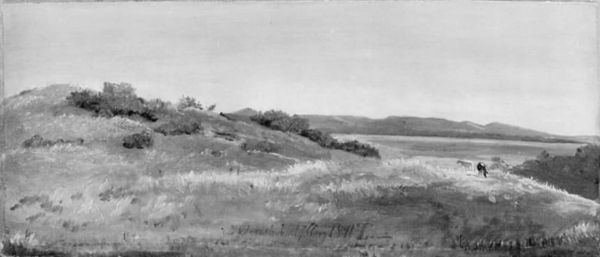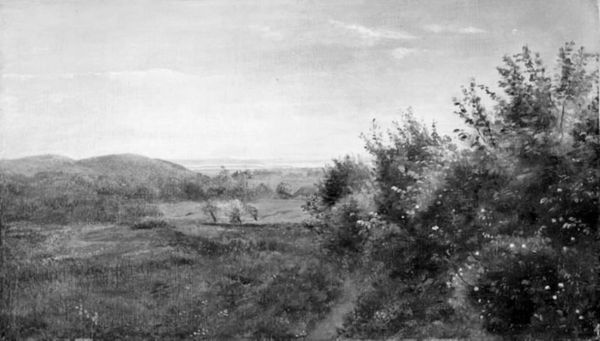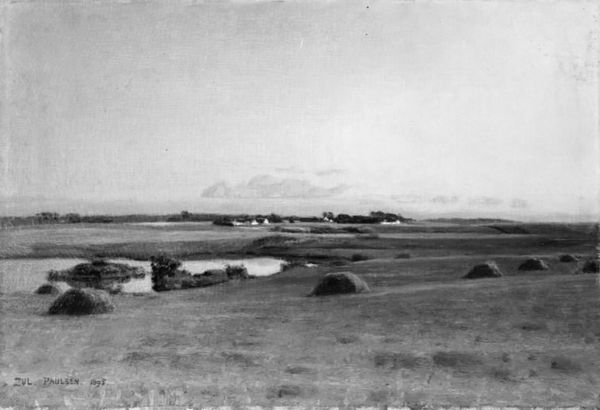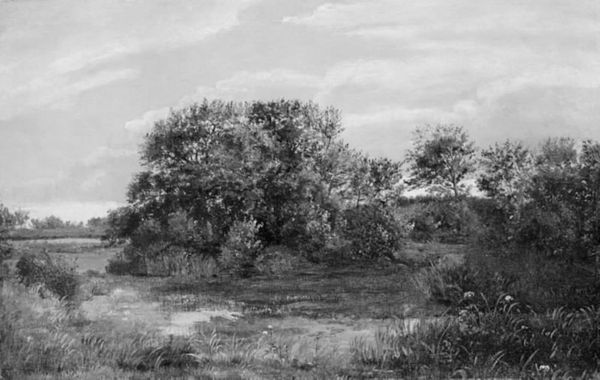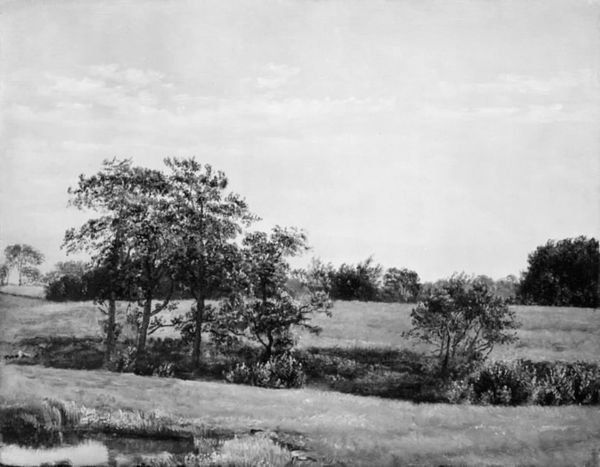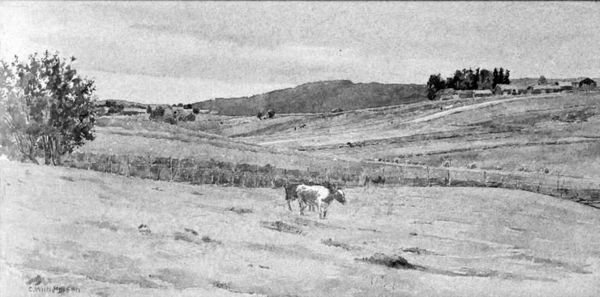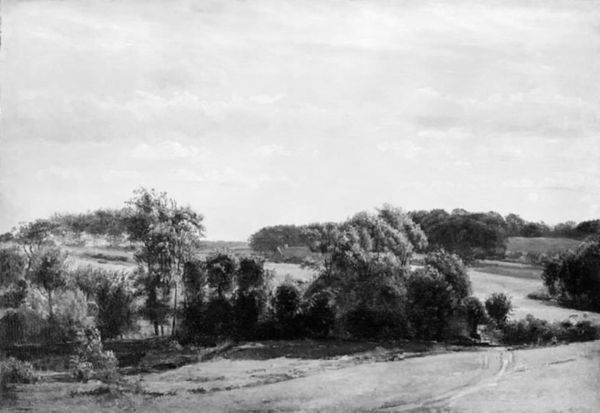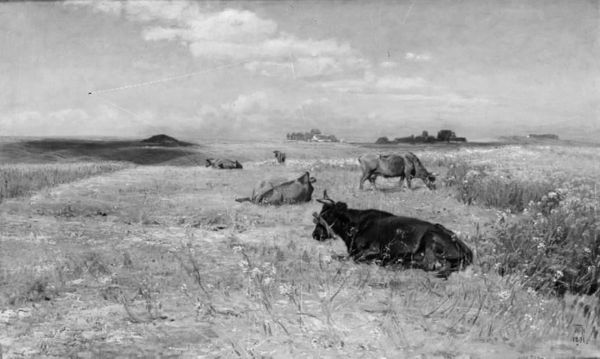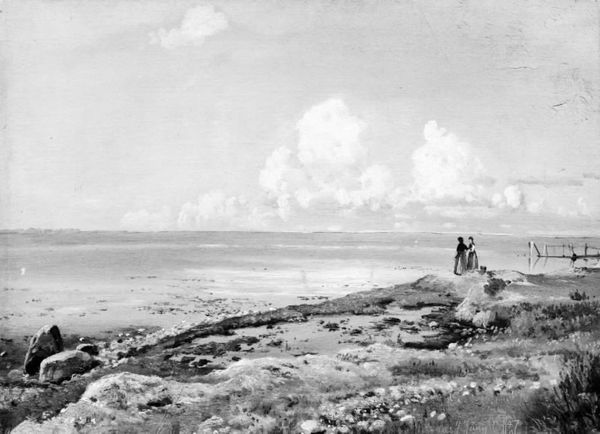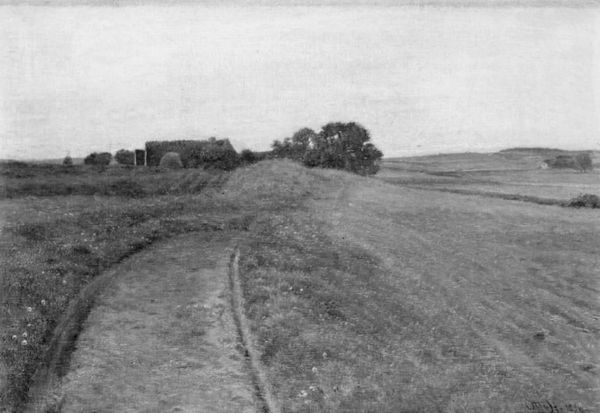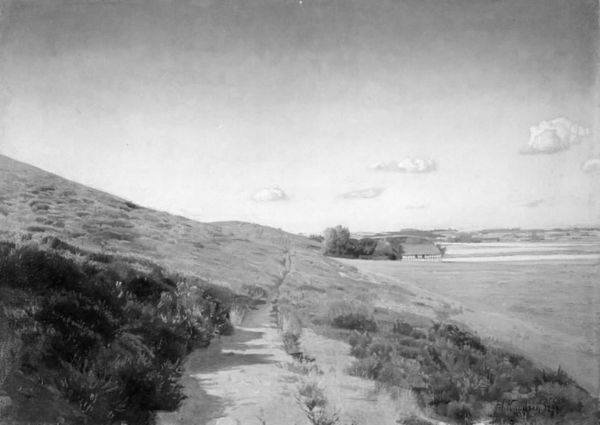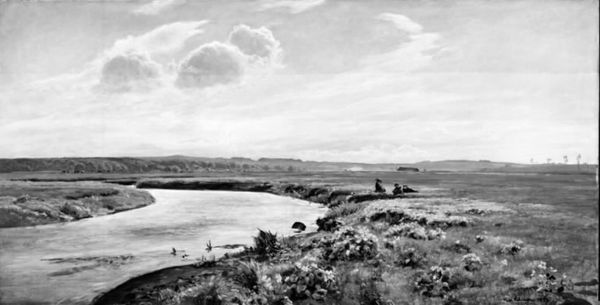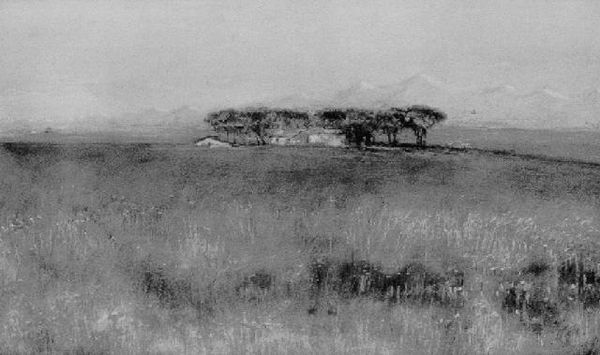
Dimensions: 32.5 cm (height) x 43 cm (width) (Netto)
Curator: Let's consider Vilhelm Kyhn's 1861 painting, "Vejle Eng. Eftermiddag," which he created using oil on canvas. It currently resides here at the SMK. Editor: My first impression is one of quiet vastness. The horizon is low, giving so much space to the sky, and there's a wonderful, subtle gradation of tone from foreground to background. A painting that is simultaneously relaxing and monumental in design, if that can be believed. Curator: Indeed. The open fields possess a resonance beyond mere pastoral scenery. Consider the solitary horse to the left. Often, in art of this period, horses, especially working animals like this, were powerful symbols of national identity and the enduring connection between humanity and the land. Editor: The diagonal placement of that distant hedgerow is especially brilliant; a very astute organization of form within space. By bisecting the field, Kyhn brings it right up against our point of view while implying incredible depth at the same time. A fine exercise of linear perspective at work. Curator: And beyond the strictly formal properties, think about the historical moment. This painting arrives at a time when Denmark was wrestling with questions of nationhood, sovereignty, and cultural identity, with the Second Schleswig War looming only three years away. These landscapes speak to something elemental and lasting—a deep rootedness in Danish soil. Editor: Although realism does dominate much of the piece, this "rootedness," as you called it, might be exaggerated with his application of romantic sensibilities as well, as it attempts to find sublime themes in the native earth. Kyhn may be giving the land qualities and feelings that are more complex than is perceived on its surface. Curator: Perhaps. It reflects the era's impulse to solidify and enshrine national images. "Vejle Eng. Eftermiddag" thus performs cultural work far beyond a simple representation of place. Editor: True, and yet its success stems equally from that tension between a symbolic ambition and its deft formal articulation. It’s both a statement and an expertly balanced composition. Curator: Food for thought about a painting that might at first seem understated. Editor: Absolutely. And I came away noticing that landscape art of that time was anything BUT passive documentation!
Comments
No comments
Be the first to comment and join the conversation on the ultimate creative platform.
